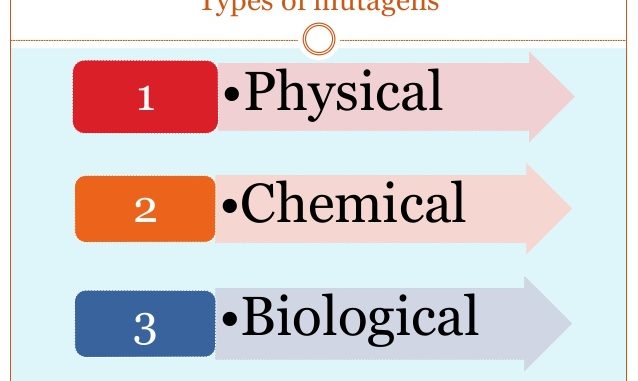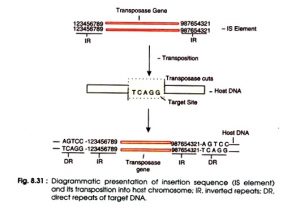
Mutagenesis and Mutagens
Mutagenesis is the process of inducing mutation by a number of physical, chemical or biological agents.
The agents that causes mutation are called as mutagens. Mutation induced by mutagens is called induced mutation. Sometime mutation occur spontaneously due to error during DNA replication. However, mutagens increases the chances of mutation.
There are three types of mutagens.
- Physical mutagens
- Chemical mutagens
- Biological mutagens
Physical mutagens:
- Physical mutagens are X-rays and UV light.
- X-rays, gamma rays, cosmic rays are ionizing radiation which ionizes water of the cell to release hydroxyl free radical (OH). The hydroxyl radical is a powerful oxidizing agent. Hydroxyl radical oxidises the phosphodiester bond of DNA. Higher dose of X-rays can even causes death of an organism.
- UV light is a non-ionizing radiation. It causes the formation of thymine dimer (Pyrimedine dimer). If two thymine occur together in one strand of DNA, UV light causes fusion to form thymine dimer. Nitrogenous bases absorbs UV lights and the absorption is maximum at 260 nm. At the site of thymine dimer confirmation of DNA is changed, so rate of error during DNA replication is high.
Chemical mutagens:
- three types of chemical mutagens are found.
- i) Intercalating agent: The chemical intercalate or slip in between two base pair in Double stranded DNA helix and hence alter the morphology of DNA at that position. Chances of error during replication is higher at this position causing mutation. Examples; Acridine orange, ethidium bromide, proflavin
- ii) Base analogue: These chemical are morphologically similar to that of normal nitrogen bases. So during replication these molecules are incorporated instead of normal nitrogen bases and hence causes mutation. Example; 2-aminopurine is analogue to Adenine, 5-bromourcail is analogue to thymine
- iii) Reacting chemicals: These chemical mutagens reacts directly with the nitrogenous bases of DNA and chemically modify the DNA causing mutation. Example; Nitrous acid react with nitrogenous bases and remove amino group from purine and pyriminine.
Biological mutagens:
- transposons and insertion sequence (IS) elements are biological mutagens. Examples; mutator gene, bacteriophage MU etc.
- Transposons and IS elements are small sequence of DNA that moves from one site to another along DNA strand and causes mutation. Transposons and insertion sequences are also known as jumping gene. These sequence contains gene which codes the enzyme transposase which helps in transposition of these sequence from one site to other.
- IS element are simplest type of transposable element. They are short DNA about 1000 nucleotide long and typically contains inverted repeats of 10-50 base pair. The only gene they poses is the gene for enzyme transposase. IS element are found in both chromosome and plasmid of both bacteria and Archea as well as some bacteriophage.
- Transposons are larger than IS element but similar as IS element because it also has two essential component; contains inverted repeats and encodes transposases.
Mechanism of Transposition
- Transposition is a type of homologous recombination in which specific DNA sequence on target DNA and invert repeats are recognized by transposases and help in recombination.
- Transposons synthesize the enzyme Transposases recognizes inverted repeats and moves the segment of DNA from one site to another. Both transposases enzymes and inverted repeats are essential for transposition

- Transposases recognizes target DNA sequences, cut open at the specific site.
- At first transposases cut the single stranded target DNA sequence which is then attached to inverted repeats of transposable elements.
- Again transposase ligate the transposable element with target DNA sequence. Finally the host enzyme repair the DNA which result in duplication of target DNA sequences.
- When transposable element is inserted into target DNA, duplication of target sequence occurs.
